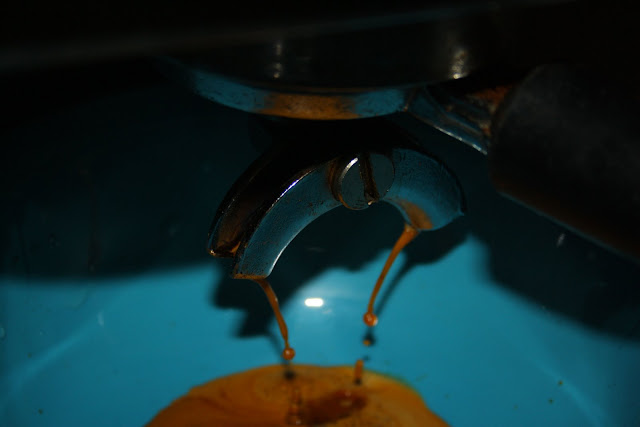
I like coffee. You know that by now. I’m also very committed to the idea that you can have coffee that’s better quality than the coffee served by 90% of cafes at home (without being crazilly obsessive and buying a commercial machine – but don’t tell my wife).
There are two essential ingredients to good coffee that make even the most rudimentary brewing methods produce a passable cup of coffee. Freshly roasted beans, freshly ground. That’s it. If you have those ingredients you can produce a great cup of coffee just by mixing the coffee with (almost) boiling water.
The freshly ground part requires a grinder. Most coffeesnobs will argue that you should spend more on your grinder than your machine. The grind is the most important variable when producing different types of coffee in different ways. Most coffee snobs say the only way to go is for a conical burr grinder – but I think given a little development of technique (ie figuring out how long to push the button for) even a spinning blade grinder will produce a better coffee than a lot of cafes if you have the right beans.
Lets face it, dud beans=dud coffee. It doesn’t matter what other variables you throw into the mix . Give a World Barista Champion a box of Lavazza beans from the supermarket and they’ll still turn out coffee that tastes stale and muddy.
Getting the beans right means getting the beans at the right time. Ideally 2-14 days post roast. The sweet spot timing wise depends on the type of bean and how roasted they are. The darker the bean the stronger the flavour and the thicker the “body” of the coffee – and the lighter the bean the more complex and tasty the bean is (and the less bitter).
There are two ways to ensure you’re hitting that timing sweet spot – one is to find a roaster who labels their coffee by roast date – the other is to roast your own. Buying roasted coffee is expensive – Coffee Dominion in Townsville roasts wonderful coffee – but charges $8 for 250gm – or around $30 if you buy a kilo in bulk. That’s a lot of coffee to get through in two weeks.
Buying green beans is much cheaper – Ministry Grounds – the online co-op I buy beans through sells green beans ranging from $6 through to $12 per kilo – you’ve got to throw postage costs into the mix – but it’s much, much cheaper. Neil Atwood, who runs the store and the associated blog, is a coffee snob and a church minister. He’s very approachable and helpful. The customer service is great – and all the green beans come with a “serving suggestion” roasting notes to help you get the best from different bean varieties.
Roasting at home is easy. There’s a plethora of information around the web. I got most of my tips from coffeesnobs.com.au (who incidently also sell green beans once a month through a first come first served “beanbay”) and my roasting set up cost me about $40 thanks to ebay and some astute garage sailing. I use a heat gun/breadmaker combo as do many people from the coffeesnobs forum – but roasting simply requires heat and agitation – you can roast beans in a popcorn popper.
Home roasting is cheap, easy, and has that do-it-yourself element that adds a whole lot of self-satisfaction to every cup. And it tastes better too.
If home roasting sounds like too much hassle you could always ask your friendly neighbourhood home roaster and they might do it for you… it’s well worth it.

.jpg)